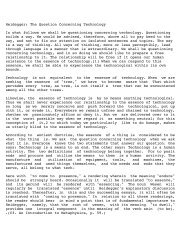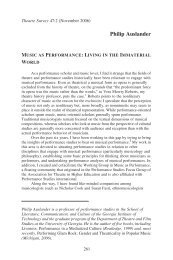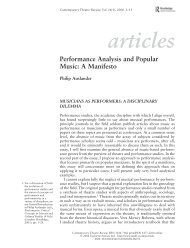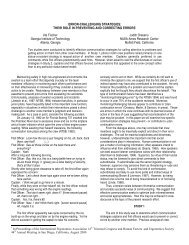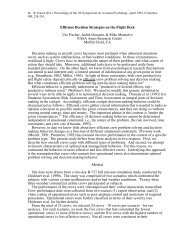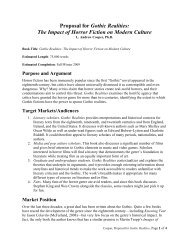INTERACTION DESIGN PRINCIPLES FOR INTERACTIVE ...
INTERACTION DESIGN PRINCIPLES FOR INTERACTIVE ...
INTERACTION DESIGN PRINCIPLES FOR INTERACTIVE ...
You also want an ePaper? Increase the reach of your titles
YUMPU automatically turns print PDFs into web optimized ePapers that Google loves.
important elements via compositional and type variation plus the disposition of<br />
space.<br />
Source: Jute, 1996.<br />
Design grids that are used for well-produced print media are equally important in<br />
computer or television layouts, and the same principles outlined here apply regardless of<br />
the platform. It is worthwhile to note that in recent years, two different layout<br />
conventions – overlays and the embedded “L design,” used most effectively by Dale<br />
Herigstad, have emerged in the realm of iTV interface design. The merits of these design<br />
layouts for iTV will be discussed in detail in chapter five. In general, however, iTV<br />
interaction designers should keep in mind that constructing an effective and consistent<br />
grid makes an iTV application both functional and aesthetic: it can aid a design by<br />
helping to communicate an intended message, script user interactions, create and<br />
maintain a brand identity if desired, and be user-friendly, promoting consistency and<br />
predictability within the system.<br />
4.1.2 Gestalt Laws<br />
The Gestalt laws apply to patterns in human visual perception. The Gestalt<br />
approach, formed at the beginning of the 20th century, emphasizes that we perceive<br />
objects as well-organized patterns rather than discrete parts. The psychologists who<br />
formulated the Gestalt laws understood them to be principles that have universal validity<br />
(Thissen, 2004). We can extrapolate these laws to the realm of interaction design, where<br />
they certainly have relevance to the design process:<br />
The Law of Proximity. Elements that are close to each other spatially are<br />
perceived as belonging together. Group the elements that belong together close to<br />
each other.<br />
81



